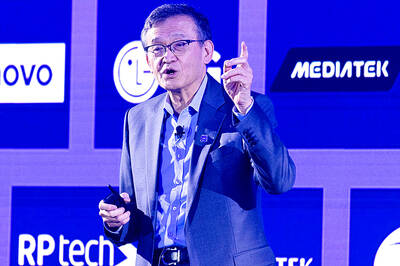Is the unknown creator of bitcoin writing a book about it?
That could be concluded from a cryptic message posted on Friday at a Web site possibly linked to Satoshi Nakamoto, the pseudonym used by the person or people who released the original bitcoin white paper in 2008.
The site details the “first excerpt to a literary work consisting of two parts” that promises to be “a short story if you will, with some of the most brought up questions and answers. I wanted the people and the facts to be known.”
In true Nakamoto style, it even includes a cryptogram, which purports to reveal names related to the title of the book.
The answer to the cryptogram appears to be “honne and tatamae,” or “tatemae,” which according to Wikipedia is a Japanese expression that describes “the contrast between a person’s true feelings and desires” and “the behavior and opinions one displays in public.”
Bloomberg News could not independently verify the authenticity of the post or excerpt.
Many journalists have tried and failed to unearth the true identity of Nakamoto, yet it is still a secret within the cryptoworld.
In the excerpt posted on the Web site, the author lists pioneers in early digital asset research such as Adam Back, Wei Dai, David Chaum and Hal Finney.
There are also bits of strangeness in the text, such as the author referring to the “first” genesis block for bitcoin. This was the first block in the bitcoin blockchain released by Nakamoto in early 2009, and yet this new excerpt seems to imply that there are more than one.
The author claims that Nakamoto got involved in the cypherpunk movement that spawned bitcoin as a 14-year-old.
“I’m going to take a moment here to explain something. I know that some of you might be reading this or hearing about it for the first time, might not know, so I should state it publicly, although by now it is assumed, but has never been publicly stated before, so I will make it official,” the author writes.
“Satoshi Nakamoto is not a real name. Specifically, not a legal name. It is primarily the essence of thoughts and reason,” the author says.
In any event, a book by the real Nakamoto would be devoured by bitcoin enthusiasts around the world. Maybe the author gives it away with the first line in the excerpt: “It was inevitable.”
Bitcoin developed after the 2008 global financial crisis traded at as little as US$0.30 at the end of 2010.
The token increased more than 1,400 percent last year as bitcoin exploded onto the mainstream, but the digital asset declined most of this year and crashed through the US$6,000 threshold last week for the first time since February, losing about two-thirds of its value since reaching a record high of nearly US$20,000 in December last year.
Bitcoin rose 8 percent to US$6,338.22 on Saturday as of 5:30pm in New York, according to Bitstamp prices.
While it is difficult to identify specific catalysts for bitcoin’s decline, the bursting of a speculative bubble might be at the heart of the matter amid questions about the virtual currency’s long-term prospects.

The Eurovision Song Contest has seen a surge in punter interest at the bookmakers, becoming a major betting event, experts said ahead of last night’s giant glamfest in Basel. “Eurovision has quietly become one of the biggest betting events of the year,” said Tomi Huttunen, senior manager of the Online Computer Finland (OCS) betting and casino platform. Betting sites have long been used to gauge which way voters might be leaning ahead of the world’s biggest televised live music event. However, bookmakers highlight a huge increase in engagement in recent years — and this year in particular. “We’ve already passed 2023’s total activity and

Nvidia Corp CEO Jensen Huang (黃仁勳) today announced that his company has selected "Beitou Shilin" in Taipei for its new Taiwan office, called Nvidia Constellation, putting an end to months of speculation. Industry sources have said that the tech giant has been eyeing the Beitou Shilin Science Park as the site of its new overseas headquarters, and speculated that the new headquarters would be built on two plots of land designated as "T17" and "T18," which span 3.89 hectares in the park. "I think it's time for us to reveal one of the largest products we've ever built," Huang said near the

China yesterday announced anti-dumping duties as high as 74.9 percent on imports of polyoxymethylene (POM) copolymers, a type of engineering plastic, from Taiwan, the US, the EU and Japan. The Chinese Ministry of Commerce’s findings conclude a probe launched in May last year, shortly after the US sharply increased tariffs on Chinese electric vehicles, computer chips and other imports. POM copolymers can partially replace metals such as copper and zinc, and have various applications, including in auto parts, electronics and medical equipment, the Chinese ministry has said. In January, it said initial investigations had determined that dumping was taking place, and implemented preliminary

Intel Corp yesterday reinforced its determination to strengthen its partnerships with Taiwan’s ecosystem partners including original-electronic-manufacturing (OEM) companies such as Hon Hai Precision Industry Co (鴻海精密) and chipmaker United Microelectronics Corp (UMC, 聯電). “Tonight marks a new beginning. We renew our new partnership with Taiwan ecosystem,” Intel new chief executive officer Tan Lip-bu (陳立武) said at a dinner with representatives from the company’s local partners, celebrating the 40th anniversary of the US chip giant’s presence in Taiwan. Tan took the reins at Intel six weeks ago aiming to reform the chipmaker and revive its past glory. This is the first time Tan